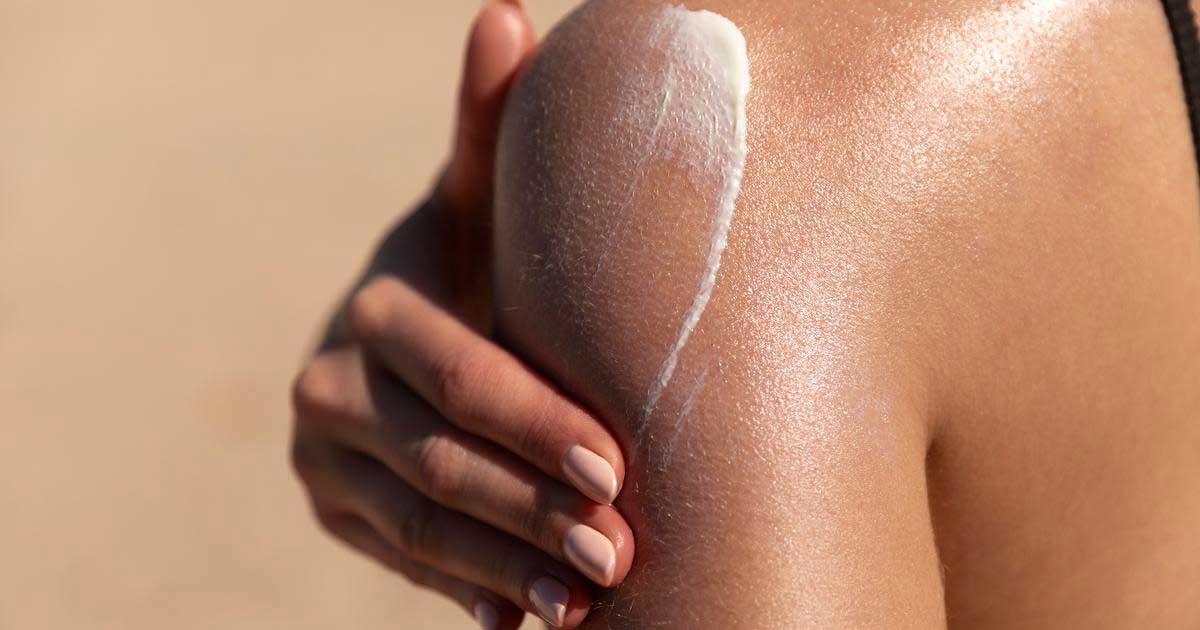Although sunlight also has multiple beneficial effects on the body, we must follow several recommendations to protect ourselves from excess. The main risk of sun exposure comes from ultraviolet radiation, which is implicated in skin aging and skin cancer.
What are sunscreens or photo protectors?
We use solar creams or photo protectors to protect ourselves from sun exposure. Sun creams have a Sun Protection Factor (FPS or SPF in English). This factor or value works by multiplying the time the skin can be exposed to the sun until the first signs of redness or erythema appear, depending on the individual’s skin type.
For example, an individual with white skin can withstand 10 minutes in the sun without burning; if you apply a cream with an SPF of 30, you will multiply by 30 the time you can be exposed to the sun without risk (30 x 10, 300 minutes without burning).
The FPS goes from 0 to 50+ (maximum protection is 50).
Skin types and Photoprotection
| Phototype I | Individuals who have intense sunburns practically never tan and noticeably flake off. | Individuals with very light skin, blue eyes, with freckles on the skin. Their skin, usually not exposed to the sun, is milky white. | Ultra protection |
| Phototype II | Individuals who burn easily and intensely, tan slightly, and flake noticeably. | Individuals with fair skin, blond or red hair, blue eyes, and freckles, whose skin is not regularly exposed to the sun, are white. | Ultra – Maximum |
| Phototype III | Individuals who burn moderately and tan. | Caucasian (European) races, white skin not regularly exposed to the sun. | Maximum – Extra |
| Phototype IV | Individuals who burn moderately or minimally tan quite easily and immediately upon sunbathing. | Individuals with white or slightly brownish skin, dark hair, and eyes (Mediterranean, Mongolian, and Oriental races). Normally brown or somewhat brownish skin. | Extra – Moderate |
| Phototype V | Individuals who rarely burn and tan easily and intensely; always present immediate pigmentation reactions. | Individuals with brownish skin (Amerindians, Hindustani, Hispanics). | Moderate – Minimal |
| Phototype VI | They never burn and tan intensely. They always present an immediate pigmentation reaction. | Black-skinned races | Minimum – No |
Application of sun cream
Sunscreens must be applied at least half an hour before sun exposure to be well absorbed; they are always better at home and on dry skin. It is recommended to apply the product abundantly and repeat it every 2 or 3 hours, depending on contact with water and sand or sweating, reducing its effectiveness.
Protection measures
To reduce exposure to the sun, in addition to photoprotective creams, it is recommended:
- Avoid exposing yourself to the sun between 10 am and 3 pm.
- Wear a hat, a long-sleeved shirt, and pants when you expect to be in the sun.
- Measures should also be taken on cloudy days since much solar radiation is still harmful.
- The sand or the sea are reflective surfaces that increase exposure to the sun, so a beach umbrella is not enough to protect yourself from solar radiation.
- Avoid tanning salons, as booth ultraviolet light can cause burns, premature aging, and skin cancer.
- Childhood sunburns have been shown to cause skin cancer. Children a few months old should not be exposed to the sun. From six months, they can start using sunscreens.
What you should know…
- The protection factor works by multiplying the time the skin can be exposed to the sun until the first signs of redness or erythema appear, depending on the individual’s skin type.
- The FPS goes from 0 to 50+ (maximum protection is 50).
- Sunscreens must be applied at least half an hour before sun exposure to be well absorbed, which is always better at home and on dry skin.






